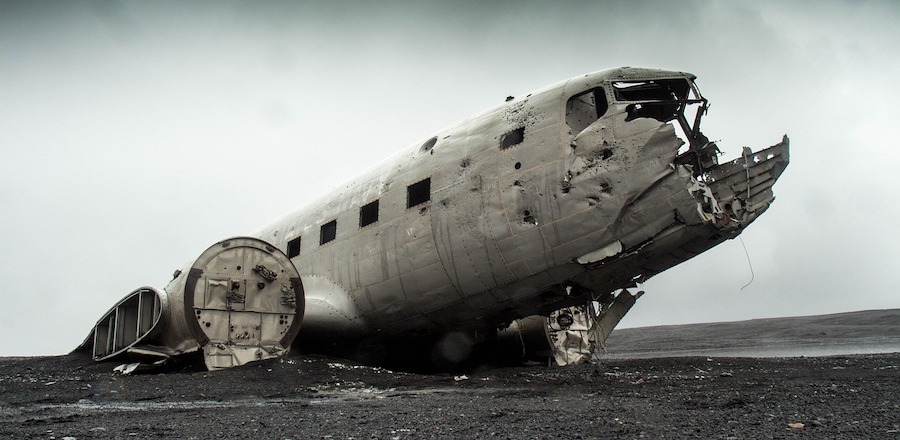Plane Crash Today: Understanding the Causes, Consequences, and the Path Forward

The phrase “plane crash today” instantly grabs attention. Whenever news breaks about an aviation accident, the world stops to listen. It’s not just because of the tragedy, but also because air travel has become such an essential part of our lives. Millions of people fly daily, and though crashes are rare, they leave a lasting mark whenever they occur.
But what exactly happens when we hear about a “plane crash today”? Why do these accidents occur, and how does the aviation industry respond? Let’s explore this topic in depth, examining the causes, notable incidents, aftermaths, and what the future holds for flight safety.
Why Plane Crash Today Capture Global Attention

Aviation accidents differ from other forms of transportation mishaps. A car crash may impact a small number of people, but a Plane Crash Today can involve hundreds of lives in an instant. This scale alone makes the headlines more impactful.
Furthermore, flying is often associated with safety, speed, and convenience. Statistically, commercial air travel is among the safest modes of transport. So when a crash does occur, it feels shocking and almost unbelievable. This contrast—between perceived safety and sudden tragedy—is one reason people around the world pay close attention when they hear of a plane crash today.
Psychologically, plane crashes also spark fear because passengers feel they have little control while in the air. Unlike driving a car, where individuals make decisions, passengers in a plane must rely entirely on pilots, crew, and the aircraft itself. This lack of control makes the consequences of a crash even more devastating in the public imagination.
Common Causes of Plane Crash Today
Each plane crash is unique, but investigators and aviation authorities have identified recurring causes that explain most accidents.
1. Mechanical Failures
Modern airplanes are engineering marvels, but they are not immune to malfunctions. Issues with engines, hydraulics, landing gear, or electrical systems can sometimes trigger emergencies. Although airlines follow strict maintenance schedules, unexpected technical failures remain a risk factor in aviation.
2. Pilot Error
Human error is often cited as one of the leading causes of aviation accidents. Pilots are responsible for making quick, high-stakes decisions, and misjudgments in navigation, altitude control, or communication can sometimes lead to catastrophic outcomes. Despite extensive training, even the most skilled pilots face immense pressure during emergencies.
3. Weather Conditions
Adverse weather—such as thunderstorms, fog, or heavy winds—can significantly increase crash risks. Planes today are equipped with sophisticated weather radar systems, but sudden weather changes can still challenge even experienced pilots. Visibility issues are especially dangerous during landing or takeoff, when planes are at lower altitudes.
4. Bird Strikes and External Factors
Another lesser-known cause of Plane Crash Today involves bird strikes, where birds collide with engines or windshields, causing damage. Similarly, external factors such as volcanic ash clouds or drone interference have occasionally led to emergencies.
5. Sabotage or Security Breaches
Though rare, deliberate acts—such as hijackings or sabotage—remain part of aviation history. Modern security measures have drastically reduced these incidents, but they cannot be ignored when discussing aviation safety.
Notable Plane Crash Today in Recent History
When we think of a “plane crash today,” it often brings memories of significant aviation tragedies that have shaped the industry.
1. Malaysia Airlines Flight MH370 (2014)
One of the most mysterious aviation incidents ever, MH370 disappeared with 239 passengers and crew on board. Despite extensive searches, the plane’s disappearance remains unsolved, sparking global speculation and countless theories.
2. Ethiopian Airlines Flight 302 (2019)
This crash involved a Boeing 737 MAX aircraft and tragically killed 157 people. The incident, along with another involving the same model, led to the worldwide grounding of the Boeing 737 MAX fleet and raised serious questions about software flaws and regulatory oversight.
3. Hudson River Emergency Landing (2009)
Not all incidents end in tragedy. US Airways Flight 1549, famously known as the “Miracle on the Hudson,” landed safely on the Hudson River after both engines failed due to a bird strike. Captain Chesley “Sully” Sullenberger’s quick thinking saved all 155 people on board. This incident is often cited as a positive counterpoint to crash tragedies.
The Aftermath of a Plane Crash Today
The phrase “Plane Crash Today” doesn’t just represent a single tragic event—it sets off a chain of consequences that can last years.
1. Loss of Lives and Emotional Trauma
The immediate and most heartbreaking impact is the loss of passengers and crew. Families are left devastated, and communities worldwide often come together to mourn, especially when the crash involves public figures or international flights. Survivors, if any, often carry long-term trauma.
2. Financial and Legal Fallout
Airline companies often face lawsuits, insurance claims, and regulatory scrutiny after a crash. Questions of liability—whether the manufacturer, airline, or pilot is at fault—can drag on for years in courtrooms. Compensation claims also add significant financial weight to airlines.
3. Investigations and Safety Reviews
Each crash is investigated thoroughly, usually by national aviation authorities such as the NTSB in the U.S. or ICAO internationally. Investigations aim not just to determine the cause but also to prevent future crashes. Findings often lead to new safety protocols, design changes, or regulatory reforms.
How Aviation Safety Has Evolved
While the phrase “plane crash today” makes headlines, it’s worth noting that aviation safety has drastically improved over the decades.
1. Advanced Technology
Modern airplanes come with advanced systems such as autopilot, terrain awareness systems, collision-avoidance technology, and enhanced weather radars. These innovations reduce the likelihood of pilot error or unexpected surprises mid-flight.
2. Stricter Regulations
Aviation authorities worldwide maintain strict oversight of airlines and aircraft manufacturers. Lessons learned from past crashes result in constant updates to regulations, from mandatory safety checks to pilot training requirements.
3. Improved Pilot Training
Pilots now undergo advanced simulator training, preparing them for rare but dangerous scenarios. From engine failures to extreme weather conditions, simulators help pilots practice life-saving maneuvers without real-world risks.
Psychological Impact of Plane Crashes
Plane crashes also leave deep psychological scars, both on those directly involved and the public at large.
- For survivors and families, the trauma can last a lifetime, leading to post-traumatic stress disorder (PTSD) and anxiety.
- For passengers worldwide, hearing about a plane crash today often renews fears of flying, even though statistics show it remains one of the safest travel methods.
- For pilots and crew, crashes are a constant reminder of the stakes in aviation, pushing them to remain vigilant and highly trained.
Why Plane Crashes, Despite Their Rarity, Matter
One of the paradoxes of aviation is that although plane crashes are rare, their impact is massive. Every crash prompts deep analysis, new safety measures, and sometimes entire overhauls of aircraft design. Unlike other industries, aviation takes each tragedy as a lesson, ensuring improvements are made globally, not just locally.
This global response is one reason why air travel today is safer than ever. The industry learns, adapts, and evolves with every incident, turning tragedy into future prevention.
The Future of Aviation Safety
Looking forward, advancements in technology and innovation promise to reduce the chances of hearing about a plane crash today.
- Artificial Intelligence (AI): AI is being developed to assist pilots with decision-making, detect anomalies in real-time, and even predict potential issues before they occur.
- Electric and Sustainable Aircraft: With fewer mechanical parts and advanced monitoring systems, the next generation of planes could minimize risks linked to engine failures.
- Autonomous Flight: Though still controversial, pilotless planes or AI-assisted flight operations may one day become standard, further reducing human error.
Conclusion
The phrase “plane crash today” is one that sparks fear, sorrow, and attention worldwide. While causes range from mechanical failures to human error and weather, each crash is a reminder of both the fragility and resilience of air travel.
Despite the tragedies, aviation has never been safer than it is today, thanks to rigorous regulations, technological advancements, and continuous learning from past incidents. Still, the emotional and psychological impact of crashes ensures that every headline leaves an indelible mark.
In the end, air travel is a symbol of human achievement, but also a humbling reminder of our limits. Every crash teaches us something new, ensuring that the skies of tomorrow will be safer than the skies of today.
